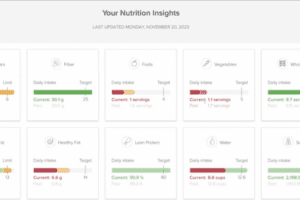The following is a guest article by Adeel Sarwar, Chief Technology Officer at CareCloud
Home health care fills an important niche in ensuring quality, affordable care for a wide range of patients. The demand for home health services is projected to grow nearly eight percent annually through 2030, which is fueled by the majority of the Baby Boomer generation reaching the Medicare age of 65 and growing orthopedic-related diseases.
While these are two large factors behind the increased demand, other factors are driving the increase, including the technological advances that enable better remote care. As Americans have become more accustomed to new ways of interacting with businesses, especially during the pandemic, demands for convenience and flexibility have increased.
While the growth of home health services promises to increase the quality of life and convenience for patients in need of care, there is a critical need for the industry to prepare for this demand by ensuring the proper infrastructure is in place so that patients can access the care they need when they need it. Nowhere is the need for updating home health infrastructure more necessary than in the area of referral management.
Currently, the home health industry operates in much the same way it has historically from a workflow perspective. Home health agencies perform the administrative functions involved with connecting providers with patients in need of home care. There are a host of specific tasks around this role, but one major function includes qualifying providers, assigning patients to those providers, and scheduling days on which appointments will take place. Pairing clinicians with patients requires tremendous amounts of time and planning, and doing this task manually only complicates the matter.
The process begins when a patient is referred to a specialist home health provider by his or her primary care physician. These referrals are traditionally transmitted by way of phone calls, faxes, or emails with scanned documents attached. Large home health agencies or even specialty practices such as physical therapy may receive hundreds – or even thousands – of these referrals on a daily basis, each of which must be physically reviewed by a healthcare administrator, then manually entered into an electronic medical record. Details that must be entered can be extensive, including patient demographics, insurance information, referral authorization codes, and more.
In the case that referral information is incomplete, the healthcare administrator must then reach out to the patient or referring physician and follow up for the missing details. Once all required information is completely and accurately entered, the administrator then moves into the process of verifying patient eligibility with the payer. It is only after eligibility is verified that the work of matching a patient with the correct provider can begin.
The matching process requires that the case manager, or administrator, considers a number of factors, beginning with the skill set of available care specialists. Other factors a case manager must consider before matching a provider to the patient includes the clinician’s current workload, the location of the clinician’s other patients, and any complexities related to geographic location or commute. Some patients may require additional accommodations, such as language specialists or special time constraints.
Only after the right provider has been identified can the case manager reach out to the patient to schedule an appointment. At this point, the case manager has spent an average of four hours prior to even scheduling the first appointment.
Once the appointment day is set, individual providers typically plan and visit their assigned patients. However, as they go about their day, any number of factors can present challenges that interfere with their planned schedule. At times a patient may not be home at the scheduled time. It may also happen that an appointment takes longer than anticipated, causing delays for the remainder of the day. Transportation can also present additional challenges. As the provider shuttles from home to home, they may face unexpected traffic or transportation delays, or they may have to take an emergency appointment across town and away from their next group of scheduled appointments. Sometimes the providers themselves face illness or family emergencies that require them to miss their scheduled appointments.
Missed appointments are a big problem, costing the overall healthcare industry between $50 and $150 billion annually. Beyond the financial ramifications, missed appointments have a real impact on patient health. An Annals of Medicine study noted that patients with frequently missed appointments tend to “experience poorer health outcomes.” Specific to home health care, a 2018 article in the Journal of Clinical Nursing highlighted the need for improved operational productivity, including mapping software that accounts for patient needs in addition to optimal geographical routing.
The urgency to resolve the challenges that abound, from the initial referral to execution of the appointment, is compelling. It becomes even more so when we consider that the technological capability necessary to manage these challenges already exists and is being used regularly outside of the healthcare field already.
We need only to leverage and build on these existing technologies to create a solution that improves and speeds up referral management in home health care while also expanding our capacity to manage the growing demand in our field.
The time is right for solutions that enable speedier intake processes including electronic referral management and task-sorting, as well as automatic data entry and eligibility confirmations, so that patients in need of care can be connected with specialist providers more quickly. We need algorithms that suggest provider-patient matches based on the unique needs and considerations of both parties.
Today we can employ automated convenience reminders that confirm dates, times, and locations of each appointment to mitigate missed appointments. We need technologies that flex to real-time situations, including traffic delays and family emergencies, so that patients can receive the care they need, as scheduled. Automated check-ins that allow the home health provider to spend more time on care and less time on planning and record-keeping would not only make the provider’s job easier, such solutions hold the potential to enable a higher quality of care.
As an industry, we need to continue to work toward a better, more connected care ecosystem that offers optimal outcomes both for today’s patients and for those of the future. Using automated technology in home health care is key to improving care, workflows, and profitability, while improving the experience and outcomes for patients.
My company and others are working to transform the industry in just this way. We at CareCloud are very excited about the future of home health care and the accessibility it unlocks for so many patients. With greater connections and better use of automated technologies to bridge the gap between patients and providers, home health care today will look different from tomorrow. Join me in calling on the industry to leverage our resources to improve the care experience of providers and patients alike.
About Adeel Sarwar 
Adeel Sarwar, Chief Technology Officer, joined CareCloud in 2004. Mr. Sarwar has extensive experience in designing and developing healthcare products and has the unique ability to align revenue growth, strategy, and innovation with IT business goals. You can connect with him on LinkedIn.













